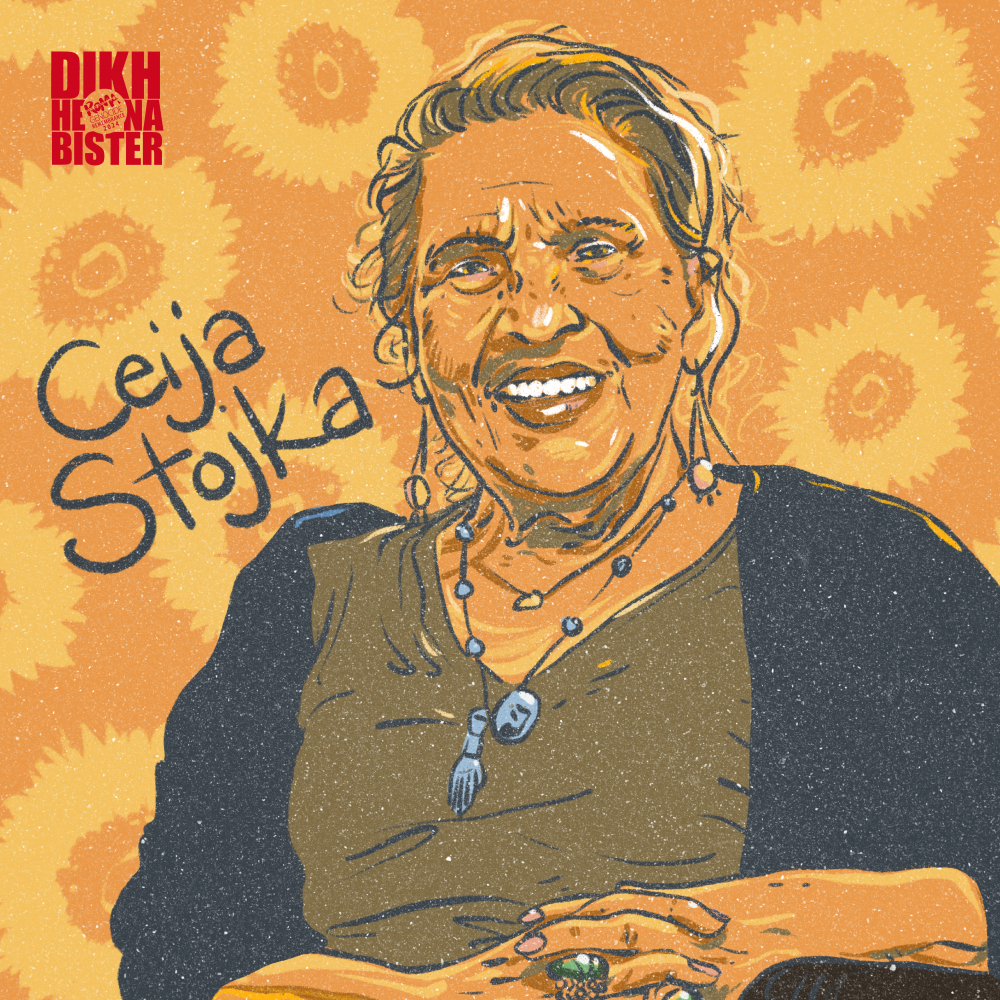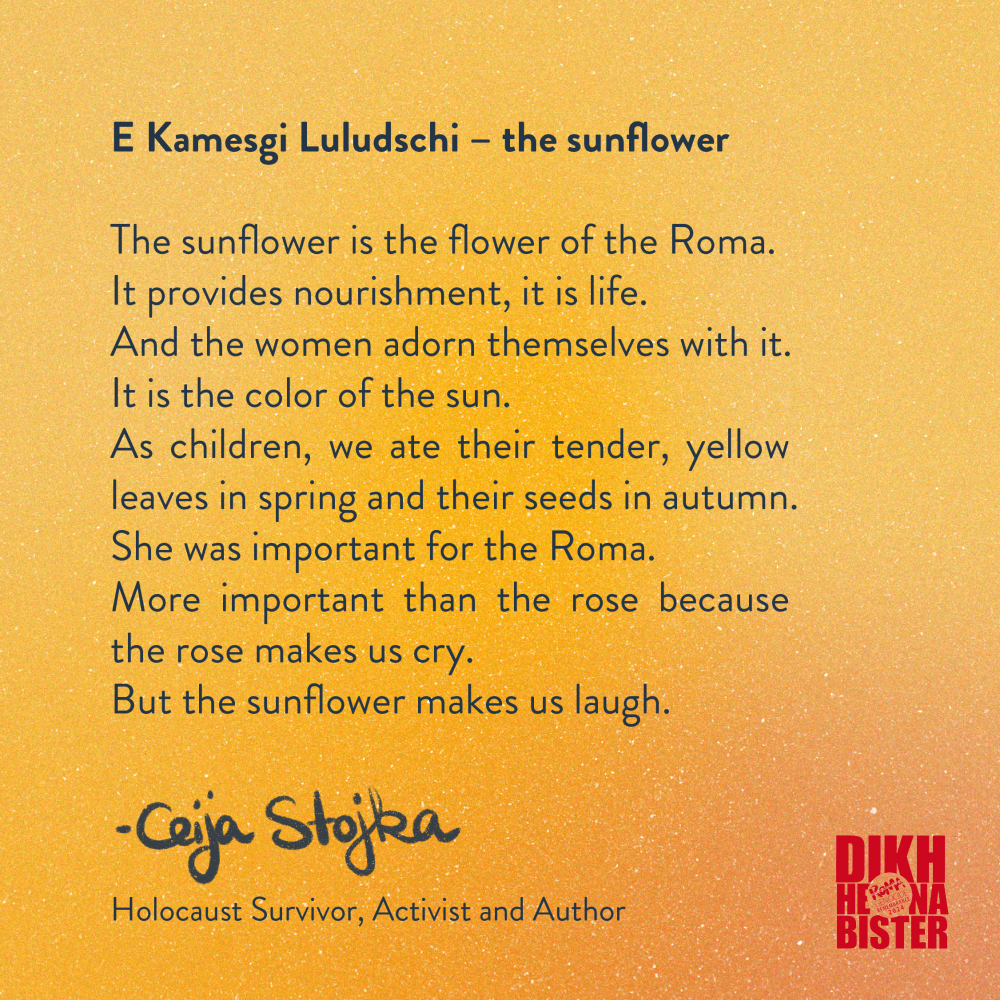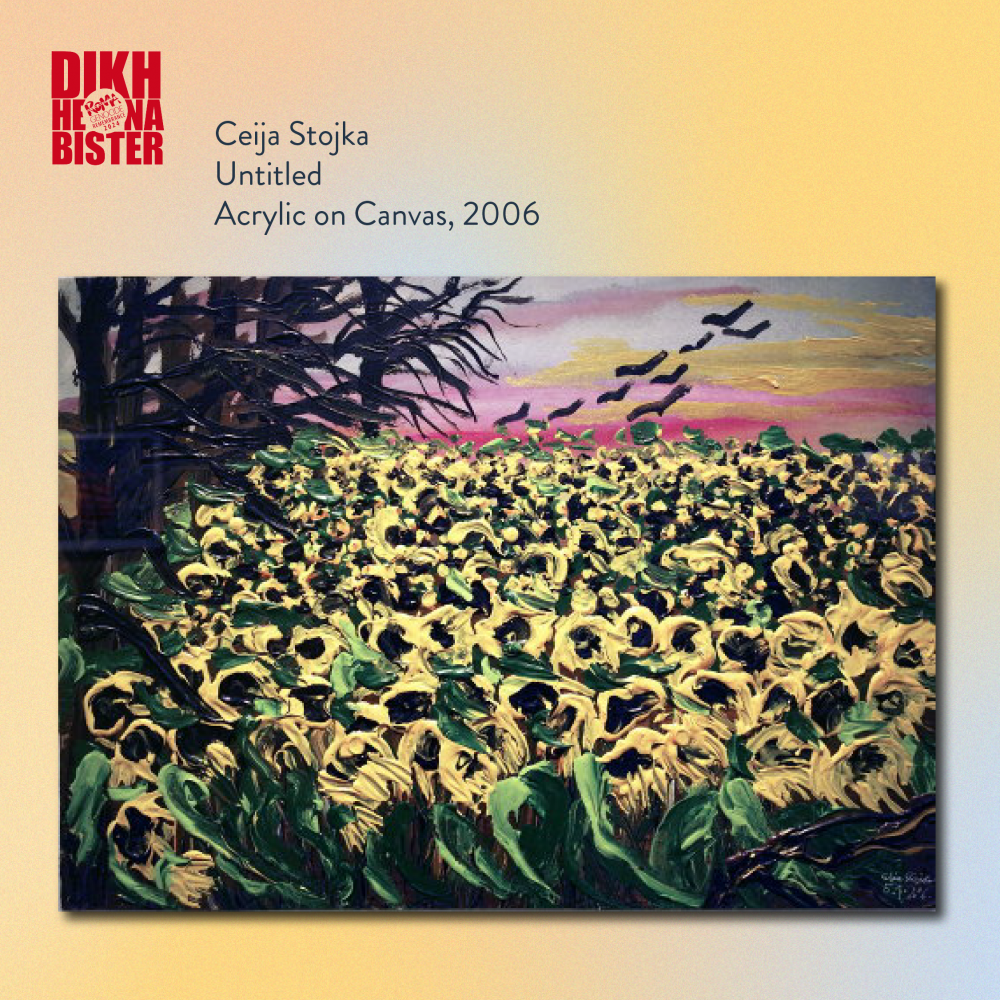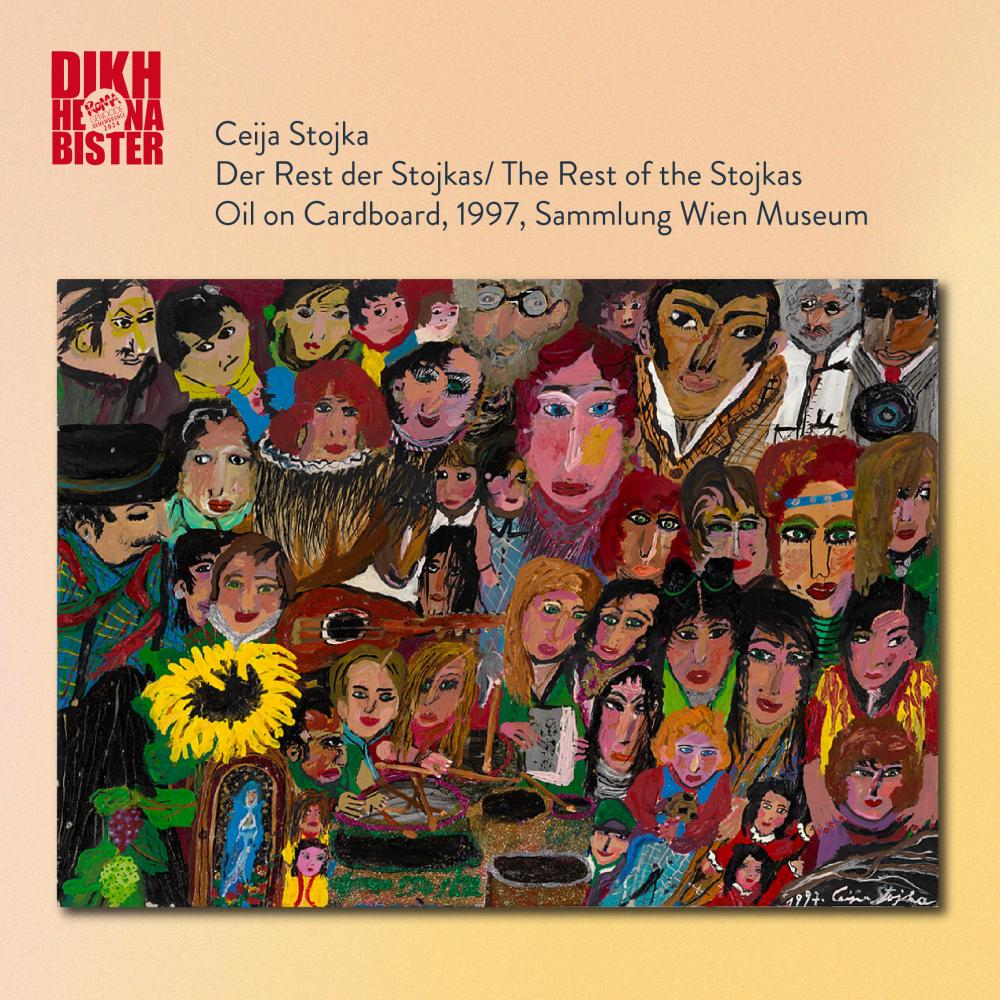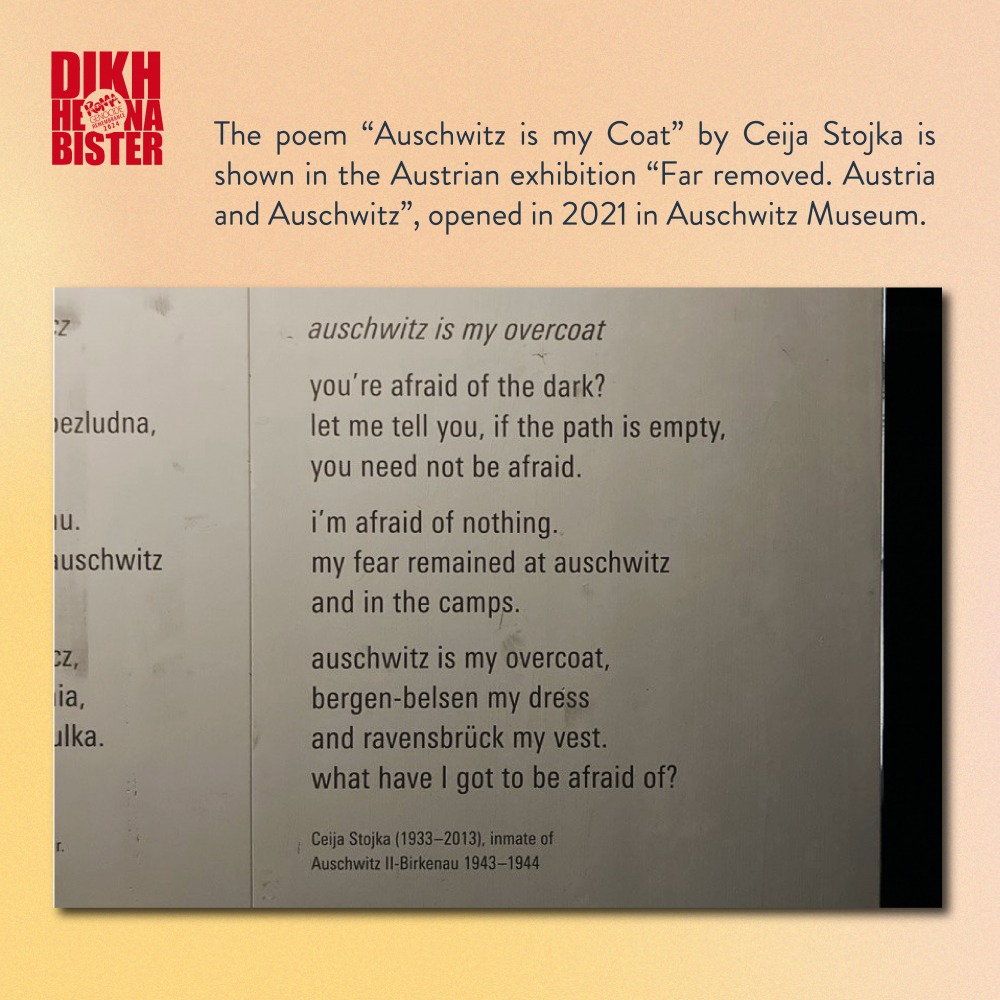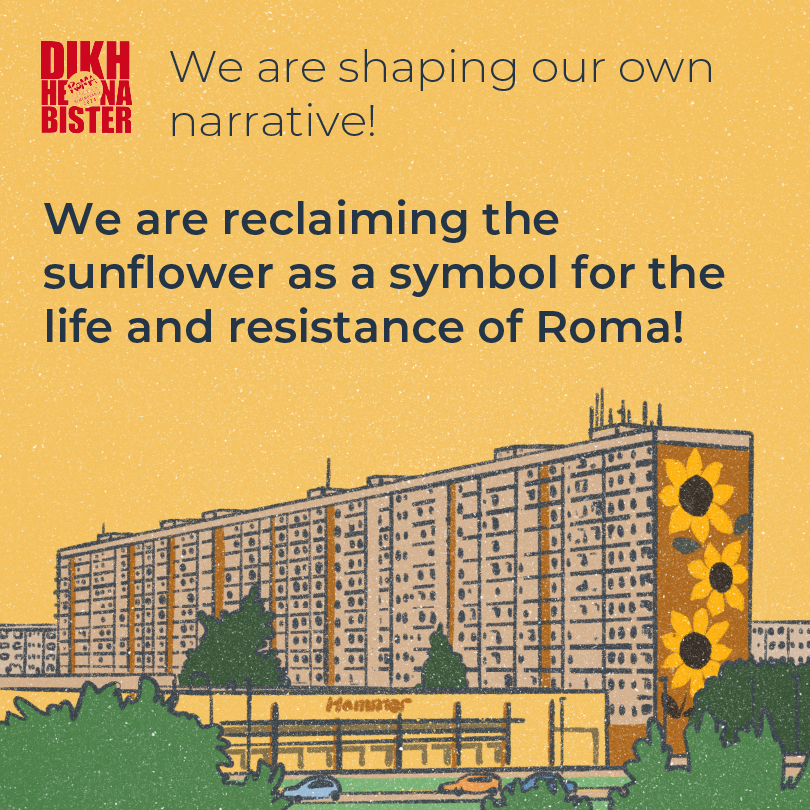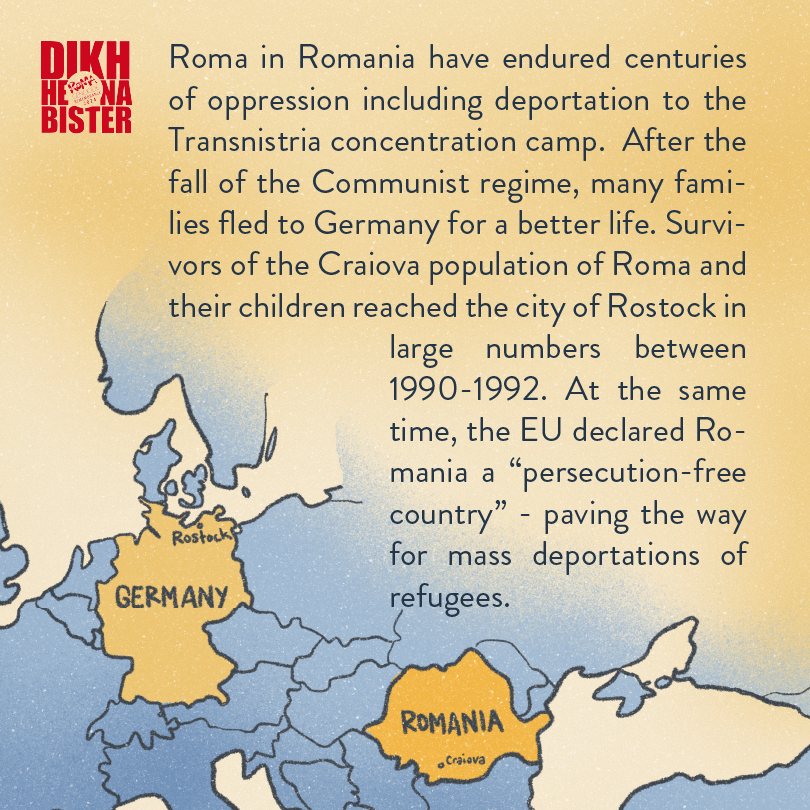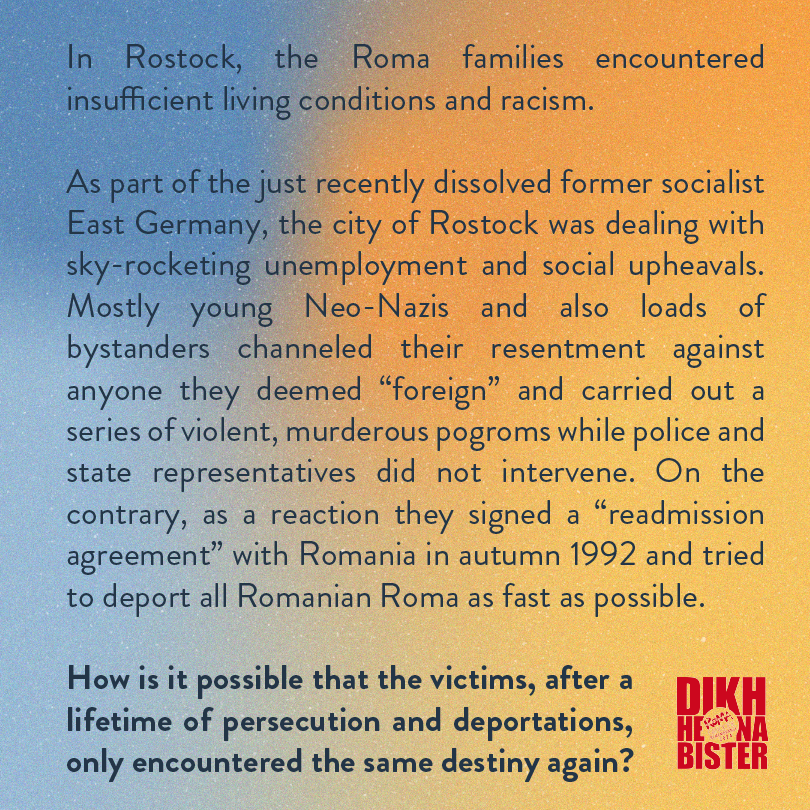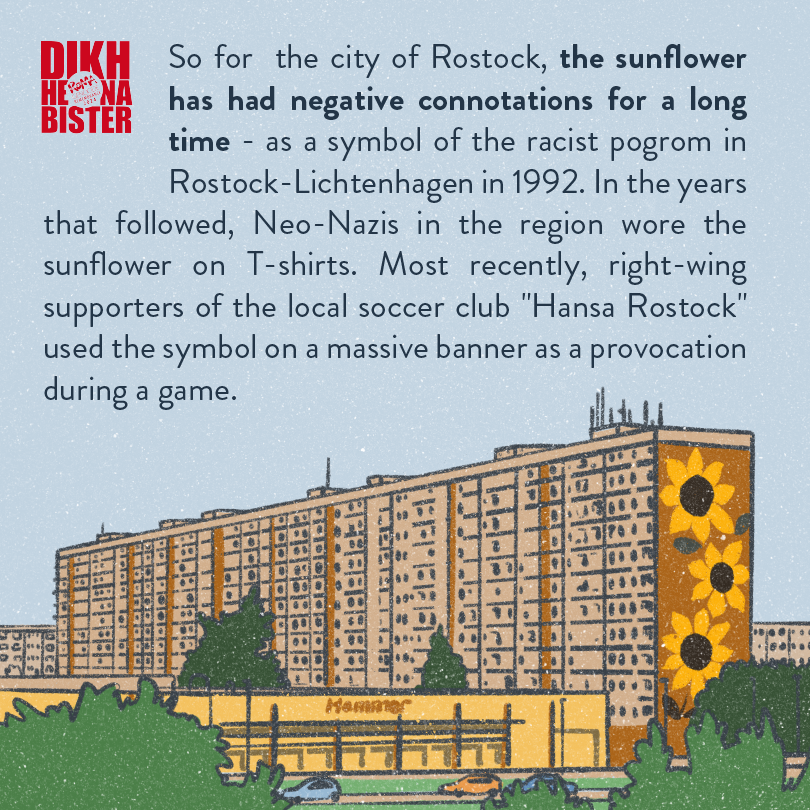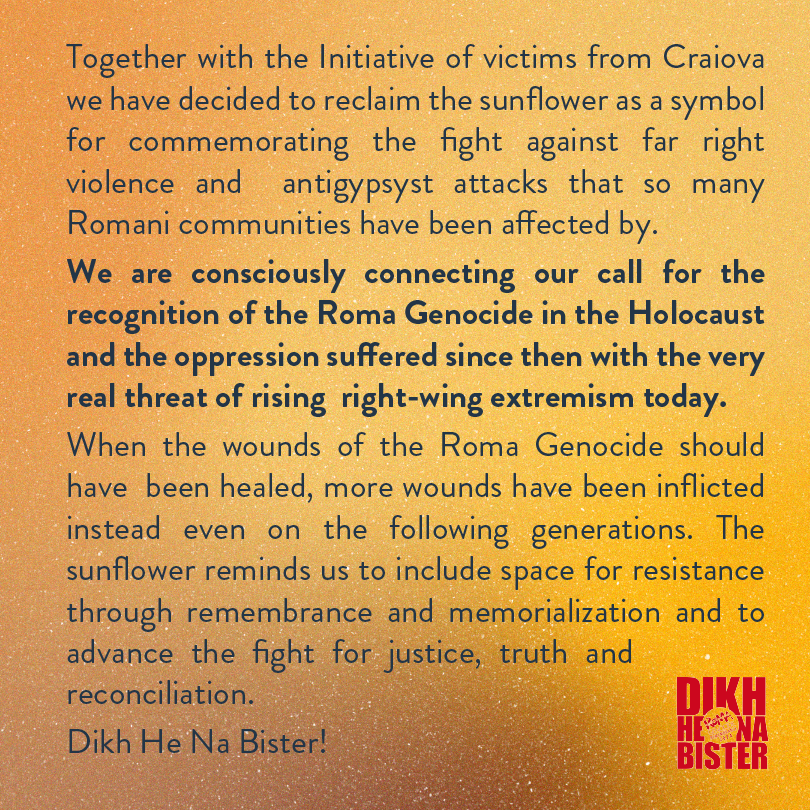We are shaping our own narrative
The sunflower is a potent symbol for the Roma. The great Romni Ceija Stojka, a Holocaust Survivor and Activist, considered it the “Flower of the Roma” and it is present all over her paintings and texts.
This year, on the occasion of the 80th anniversary of 2 August 1944, we have decided to honor Ceijas love for the sunflower and give it a prominent place in Dikh He Na Bister – Roma Genocide Remembrance Initiative.
E Kamesgi Luludschi – the sunflower, by Ceija Stojka
The sunflower is the flower of the Roma.
It provides nourishment, it is life.
And the women adorn themselves with it.
It is the color of the sun.
As children, we ate their tender, yellow leaves in spring and their seeds in autumn.
She was important for the Roma.
More important than the rose
because the rose makes us cry.
But the sunflower makes us laugh.
Published in: “Die Morgendämmerung der Worte. Moderner Poesie-Atlas der Roma und Sinti.” Edited by Wilfried Ihrig and Ulrich Janetzki. Berlin: Die Andere Bibliothek, 2018, p. 71
The racist attacks on the “Sunflower-House” in 1992
The sunflower as a symbol has – next to Ceija Stojka’s beautiful life-affirming image of the “Flower of the Roma” – also a painful and violent connotation.
In one of the largest racist pogroms after the end of the Second World War, a racist mob attacked the “Sonnenblumenhaus” (“Sunflower-House”) in the German city of Rostock-Lichtenhagen for several days in August 1992. More than one hunded Roma families, mostly from Craiova in Romania as well as former vietnamese contract workers lived in the building. Thousands of people stood by, watching and clapping as the building was set ablaze. The victims survived all by themselves without help by police or firefighters.
The answer of the recently reunified German government? Mass deportations and stricter immigration laws. The initiative of victims from Craiova has been fighting for the acknowledgement of the pogrom they suffered and for justice.
Today, there is a documentation center in Rostock commemorating the attacks. Please see the brilliant documentation centre Lichtenhagen Im Gedächnis as an example for setting up an initiative to commorate and to educate on a pogrom.
The sunflower has been used by Neo-Nazis and fascists to provoke and advance further their racist agenda. We are taking this symbol back now, as a reminder to include space for resistance through remembrance and memorialization, and to advance the fight for justice, truth and reconciliation.
Dikh He Na Bister!

